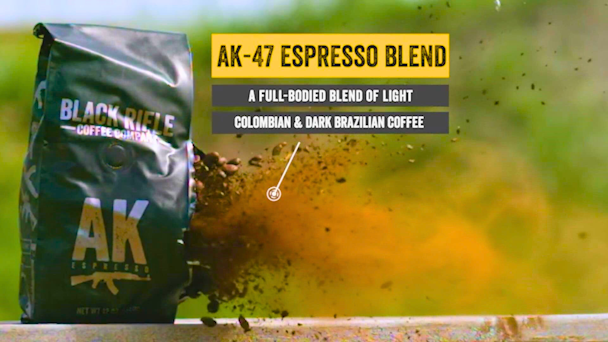The media reason there will be a surge in ‘anti-woke’ brands
Due to media pricing quirks in the US, it may be more cost-effective to create bespoke Conservative brands. You may not like it, but Mighty Joy’s Eric Dahan explains why we'll see more.

The direct-to-consumer (DTC) ecommerce model burst on to the scene in the early 2010s, heralding an era dominated by innovative, digital-first brands. Brands like Warby Parker, Dollar Shave Club, Casper, and Glossier were highly disruptive compared with their incumbent, retail-focused competitors.
Fast-forward to today and the original DTC wave has since dissipated. Digital and social customer acquisition costs are much higher, driving traffic is more competitive, direct-to-consumer is no longer a differentiator, and venture capital has significantly dried up now that money is no longer dirt cheap. It would seem that the large brands and the rest of the market have closed the last remaining ad arbitrage opportunities–or have they?
Explore frequently asked questions
There is a new ad arbitrage opportunity, but it is driven by a cultural gap, not a knowledge gap or adoption differential. In the evolving landscape of modern advertising, “woke” culture has led to a notable reluctance, and dare I say fear, among big companies to advertise on conservative channels.
This phenomenon presents a remarkable opportunity for savvy advertisers willing to stray from the pack. With lower cost-per-thousand impressions (CPMs) and a highly engaged audience, conservative media and social channels could become the next frontier for innovative brands.
Virtually everything is divided along partisan lines
It may seem crazy to suggest that a brand should align itself politically. Any standard-issue consultant would have a conniption over the idea of cutting your total addressable market in half right out of the gate. Unfortunately, remaining apolitical is becoming increasingly more difficult each day, and it may not even be an option soon.
According to Pew Research, the partisan gap divides Americans substantially more than religion, race, education, or age. We’ve already witnessed a fragmentation of our news sources along partisan lines. We are in the process of seeing that same partisan split among our news sources, social platforms and, yes, brands.
Advertisement
Nike’s relationship with Colin Kaepernick is an early example of a brand being pressured into getting involved in a political/social controversy. Another example is when Ben & Jerry’s decided in 2021 to boycott the sale of its ice-cream in Israeli settlements in occupied Palestinian territories in line with the political BDS movement. At this point the brand is already so politically polarizing. There is little it could do to change perception now.
A more engaged audience
Further, there is a big opportunity in doubling down and finding ways to engage customers. The old ad model was based mostly on reach. However, as the information landscape and brand ecosystems become increasingly saturated, the goal is not just getting in front of the customer but also mobilizing them to buy.
Brands have largely ignored speaking directly to conservative audiences out of fear of getting “canceled” by the left. But conservative audiences are fed up with being ignored.
Advertisement
They’re hungry for content that speaks to their values, which makes them incredibly engaged. When you advertise on these channels, you’re not just throwing money at impressions; you’re investing in a relationship with an audience that’s ready to listen and act. Higher engagement means better conversion rates, better retention, and more word-of-mouth conversions. If you want a loyal customer base, this is where you find it.
Successful conservative brands
Some brave brands have already forged a path for the next wave of conservative brands by speaking directly to conservative customers. Take Black Rifle Coffee. It’s winning despite being in one of the most saturated and commoditized categories. Black Rifle Coffee leaned in fully on almost all of the progressive taboos—unapologetically patriotic, pro-police (as seen with its “thin blue line” product), and clearly very pro-Second Amendment.
The reaction? People love it.
Another example is Jeremy’s Brands–a self-proclaimed “anti-woke” stable of brands started by the conservative news and media company, The Daily Wire.
One of these brands, Jeremy’s Razors, aims to go toe-to-toe with popular DTC brands like Dollar Shave Club by leveraging The Daily Wire’s engaged conservative base and the relatively low opportunity cost of utilizing its own ad inventory. The Daily Wire is also a great example of how media companies can (and likely will) morph into brand studios–but that is a topic for a different day.
A third example is Nimi Skincare, which can be described as the anti-Glossier. Nimi describes itself as modern skincare that adheres to “timeless values,” which it highlights as Family, Faith, and Freedom.
Suggested newsletters for you
The brand’s About Us section states, “Beauty and skincare companies promoted a political agenda that made us feel like we were compromising our principles with every purchase. We realized that they lost touch with who we really are–and we weren’t alone.”
The big arbitrage opportunity
Not only is speaking directly to conservative customers a better way to engage with them, but it is also a lot cheaper—at least for now. To be blunt, advertising is all about ROI. Right now, conservative channels that stand as a counter to woke-ism have scared away a lot of the large, incumbent brands that do not to be associated with those challenging the left’s zeitgeist. As a result, conservative channels have less demand, resulting in relatively cheap impressions.
This pricing disparity is a goldmine for those willing to seize it—not only do you get a more engaged audience, but it’s also at a fraction of the price to reach. This is the current cultural-arbitrage opportunity that will likely fuel the next wave of ecommerce companies. The ongoing fragmentation of information means brands have to pick a side. By embracing conservative channels, you’re playing it smart.
The next wave of startup brands could very well emerge from this underexplored territory, leveraging the opportunities that “woke” culture inadvertently provides.
The challenge, from a business perspective, is not to overdo the partisan leanings. For example, do not be so conservative that you end up on the extreme right. Though culturally, the pendulum seems to be starting to swing towards conservatism, it is still a pendulum, and pendulums are meant to swing.
Eric Dahan is founder of Mighty Joy, a full-funnel community marketing agency that combines influencers, impactful creative, and performance marketing to create campaigns for DTC brands and high-growth companies. If you want to continue the conversation, he is here on LinkedIn.
